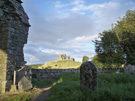
Recently, a small group of people has been making history. An American student with Down syndrome is the first to graduate with honors in education. In Spain another Down syndrome person became the first elected councilwoman.
A hundred years ago, this wasn't possible since people with the chromosomal disorder were often ostracized. For as long as humans have lived on earth, the belief is there have been people born with Downs.
The oldest confirmed case though comes from France through the discovery of a child skeleton. The child died fifteen hundred years ago during the Early Middle Ages. What's interesting is that the way she was buried suggests she had not been stigmatized in life. For centuries, people with Down syndrome have been part of art and literature.
Only in the late nineteenth century did an English physician, John Langdon Down, publish the first accurate description. But we'd have to wait until the 1970s for scientists to discover a person with Down syndrome was born with three rather than two copies of chromosome 21. You've also probably heard it called Trisomy 21.
The discovery of the child's skeleton with Down syndrome was in a fifth and sixth century necropolis by a church in eastern France. Ninety-four skeletons were unearthed along with the child who was five to seven years old. The skull was short and broad with a flattened skull base and thin cranial bones which are all features of Down syndrome. The child was buried on its back with the head in a westerly direction common to all those buried there. Archeologists theorize since the child was treated the same as others in the community in death that she was unlikely stigmatized when she was alive. We'll need further proof but it's a positive sign.
More Information
Down Syndrome History
"Down syndrome or Down's syndrome is a congenital condition caused by the presence of an additional copy of chromosome 21 in a person's cells. This is also referred to as trisomy 21."